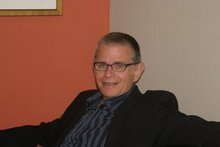Q-ing up this quad we find the world of relationships and culture. We are raised in our own particular culture and begin to take on the customs and beliefs of it, not only as our own, but also as the “right” ones. Being embedded in our little niche in the world we come to believe that we are it and unless we have the opportunity to get some distance from it, some perspective if you will, we will have a hard time seeing that what we believe to be right is simply one way of “seeing” things. This is why it’s so important for us to learn how to gain some distance from our beliefs and be able to work within our system rather than being had by it.
We grow up in our part of the world, in our little community, in our particular family, using the language that defines our niche. The more constricted that language, the more strident it is in regards to how we should be and behave, and the more negative it is in relation to how we each conform to the culture we’re being taught, the harder it is for us to gain the birds eye perspective I mentioned and the more locked into our way of being we are.
In Recovery, and in other parts of our lives, we become defined by this enculturation and internalize beliefs about what the perfect family looks like, the perfect parent, and the perfect spouse. As we try to live up to these images of perfection, the world may be falling apart around us but we continue to try and control things and make them right. Doing so, we develop our own self-image around efficacy and success. Many of these beliefs show up in Q1 in our self-concept. For families to regain some form of hope, or dare to dream of a healthy loving family, it’s essential to be able to unfurl these beliefs and learn new ways of being with one another that are based on the uniqueness of each family member and the collective meaning that each family creates.
Holding onto the same beliefs and behaviors when a young person returns from treatment is a recipe for replicating what led to treatment in the first place. Think about what beliefs your family holds for what is considered right behavior. How do family members communicate with one another? What image of the family must be held at all costs that inhibits the family’s ability to reach out and ask for help before it’s too late? How has your family background, social norms, and status in the community led to, and continue to influence, the challenges you face in your family? Have they led to isolation, shame, and guilt? Or, are you able to reach out for help and support from other family members and/or supports in the community?
Communication is a key component of healing in families beset by problems with young people. Often parents and families need to learn a new language. The new language is one of mutuality, respect and understanding. What expectations are communicated and how? How does your own inner world influence the way that you communicate with one another? Are your words and behavior congruent? How do you deal with conflict? What methods have you learned for dealing with your own emotions that influence how you communicate with those you love? Can you be transparent with one another, showing your own humanness, while communicating your thoughts, feelings and expectations with those loved ones?
These are all questions to be addressed when dealing with addiction and families in the healing process. Quadrant II reflects our lives with others, how we share our interpretations of reality and/or how we can come to better understand one another in a way that leads to acceptance, support, and trust.
Sunday, August 24, 2008
Subscribe to:
Post Comments (Atom)







No comments:
Post a Comment